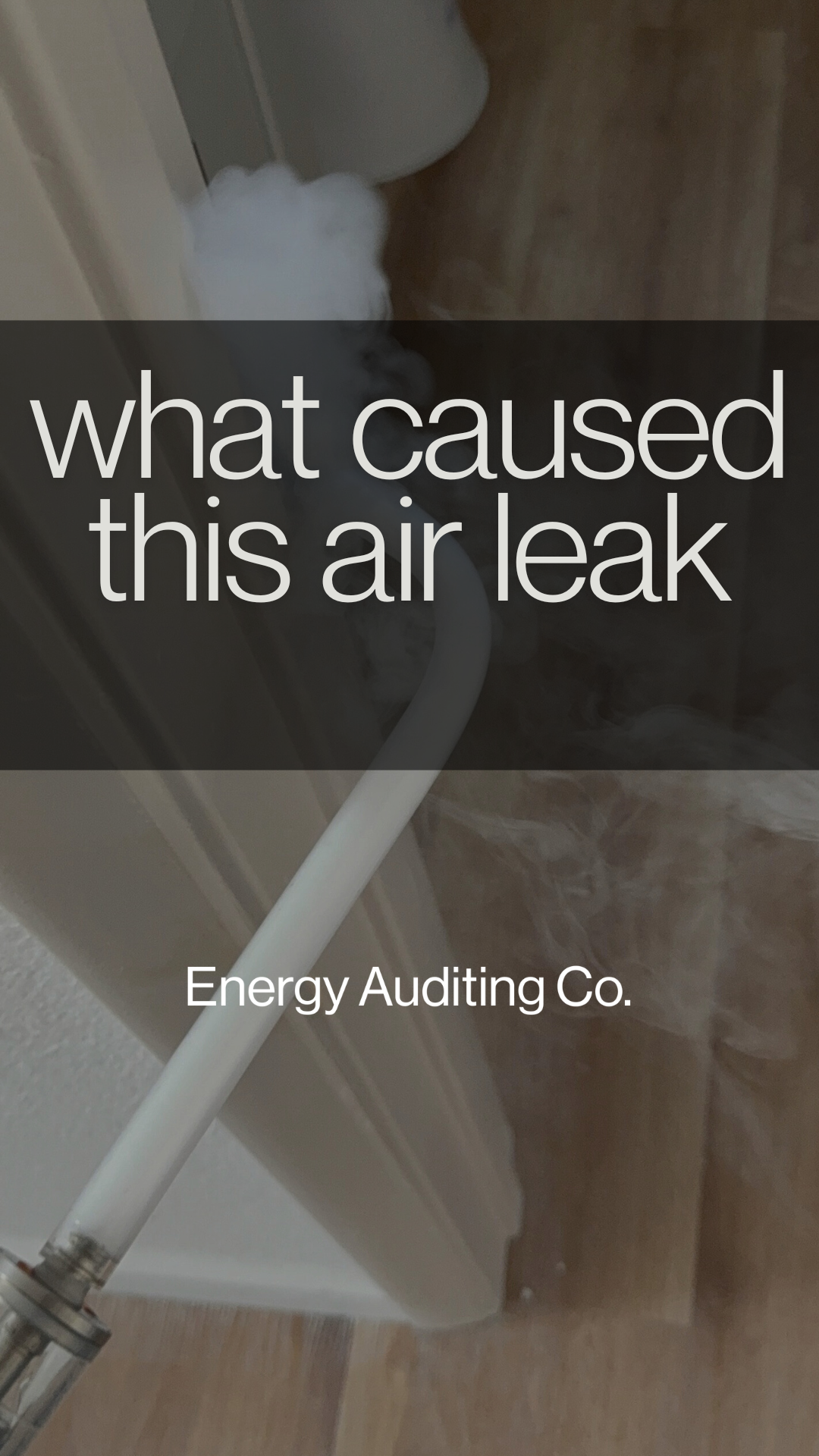The Importance of Sealing Wall Plates
During a recent inspection in Clark County, we discovered air leaking through an interior door frame. At first, nothing seemed out of place—the door was installed correctly, and the trim was intact. But further testing revealed steady air movement through the casing. The culprit? Unsealed top and bottom wall plates behind the drywall.
This type of air infiltration is a common but often hidden problem that can compromise the building’s thermal envelope and lead to performance issues, comfort complaints, and inspection challenges.
Why Did This Home Fail Testing?
When wall cavities are not sealed at the top and bottom plates—where framing meets drywall or the subfloor—air can move freely through the walls. It then escapes through penetrations like outlets, light switches, or, in this case, the door frame.
What’s Really Happening Behind the Trim
When wall cavities are not sealed at the top and bottom plates—where framing meets drywall or the subfloor—air can move freely through the walls. It then escapes through penetrations like outlets, light switches, or, in this case, the door frame.
Door frames are especially vulnerable because they often have slight gaps between the casing and drywall. If there’s an air pathway behind the wall, the door trim becomes an easy outlet. What we observed during the inspection was not a problem with the door itself—it was a sign of a breakdown in the air barrier within the wall assembly.
Why It Matters
Clark County follows energy standards based on the International Energy Conservation Code (IECC), which requires the building thermal envelope to be sealed to limit air leakage. According to IECC Section R402.4:
“The building thermal envelope shall be constructed to limit air leakage. The sealing methods between dissimilar materials shall allow for differential expansion and contraction.”
Air escaping through wall trim is a clear indicator that this requirement isn’t being met. Even small leaks like this can:
Increase energy consumption
Decrease HVAC efficiency
Create drafty, uncomfortable rooms
Result in failed inspections or performance testing
Over time, this kind of air movement can also allow moisture-laden air into wall assemblies, potentially leading to long-term durability concerns.
This video shows air leaking through a door frame during a recent inspection.
How to Fix It
If you encounter this issue, it can be corrected without major reconstruction:
Remove the door trim to access the gap between the drywall and framing.
Seal the top and bottom plates using low-expansion spray foam or caulk to close the air pathway.
Check surrounding areas, like outlets or light switches on the same wall, for similar gaps.
Reinstall the trim, ensuring it doesn’t interfere with the newly applied sealant.
This type of retrofit sealing can improve energy performance and help meet code requirements, even after finishes are installed.
How to Prevent It
Preventing this issue is simple when it’s addressed early:
Seal top and bottom plates during framing, before drywall is installed.
Train framing crews and subs to include air sealing as part of their standard process.
Add visual air sealing checks to your inspection or pre-insulation walk-through.
Use backer rod and caulk around door and window trim during finish work to prevent leaks at the surface level.
Even in existing buildings, targeted sealing can help tighten the envelope and improve indoor comfort.
Final Thoughts
Air leaks through door frames aren’t always obvious, but they’re often signs of larger problems behind the wall. In our recent Clark County inspection, what seemed like a small draft pointed to unsealed framing that compromised the thermal envelope.
Contractors who take the time to address these areas—either during construction or as part of a retrofit—can avoid inspection issues, reduce callbacks, and deliver more efficient, comfortable buildings.
For more guidance or to schedule an envelope inspection, feel free to get in touch. Small gaps can lead to big losses, but they’re easy to fix when you know where to look.
